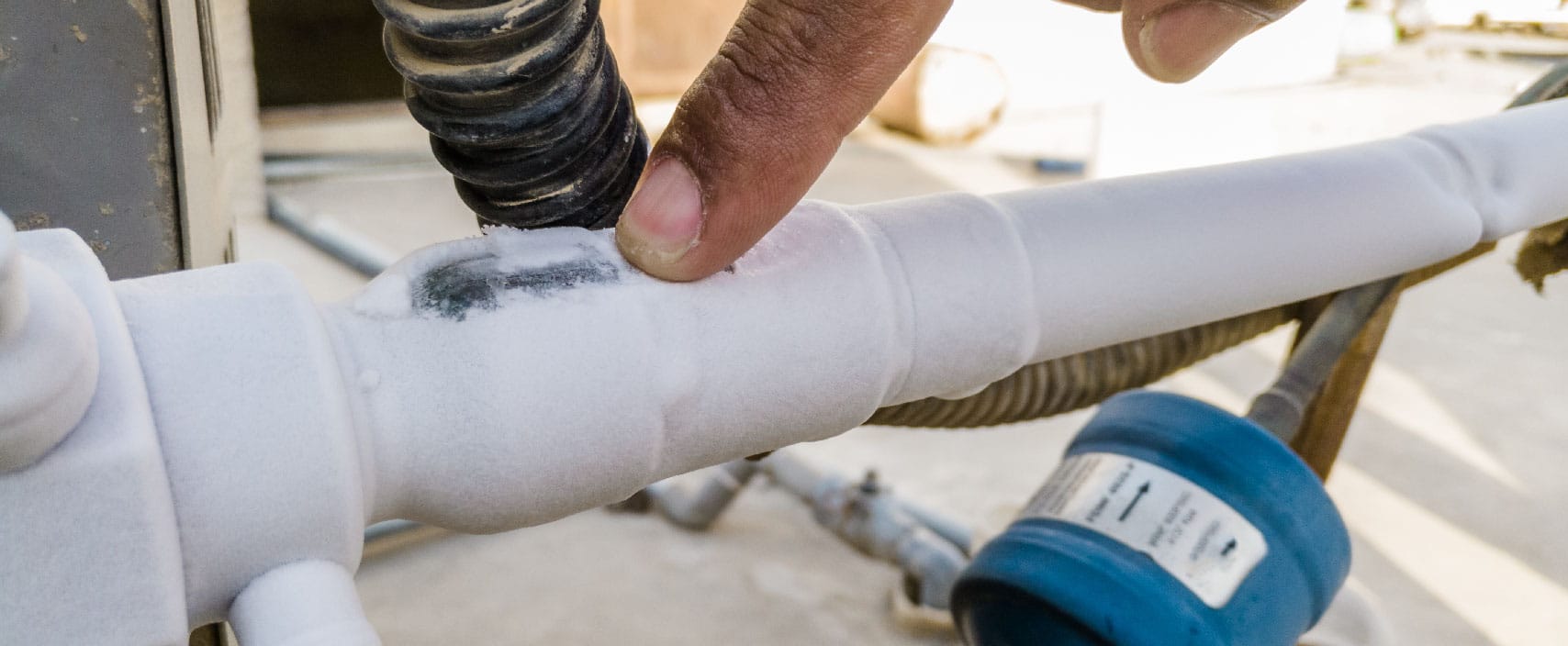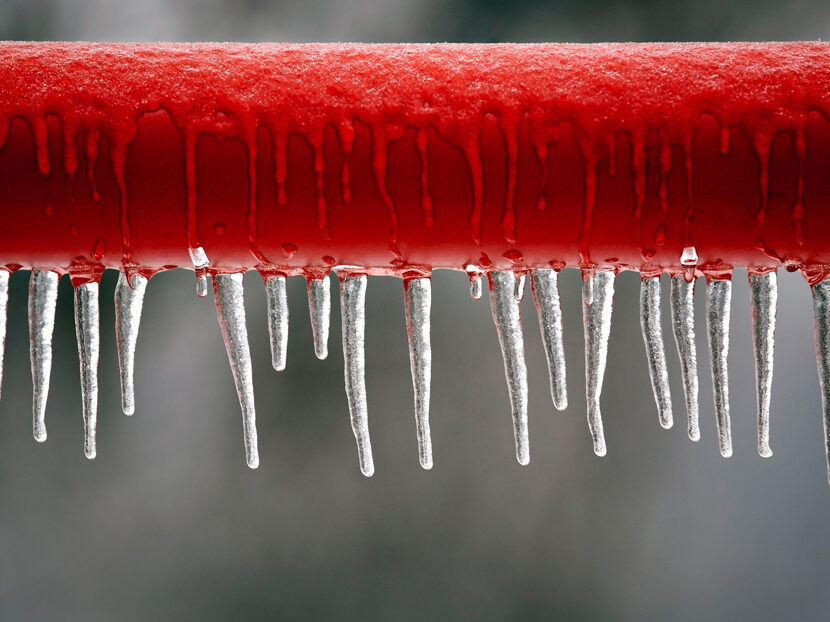Right here in the next paragraph you can find a bunch of helpful insight regarding What Do I Do If My AC Pipe Is Frozen.

Introduction
Uncovering that your air conditioner pipeline is iced up can be worrying, particularly during hot summertime when you count on your air conditioning system the most. Understanding what to do in such a circumstance is critical to stop more damages to your air conditioning system and ensure your comfort indoors.
Recognizing the Causes
A number of aspects can contribute to the freezing of an a/c pipeline. Comprehending these reasons can help you deal with the problem efficiently.
Lack of Airflow
One usual root cause of a frozen air conditioner pipe is inadequate air movement. When the air flow over the evaporator coil is restricted, it can trigger the coil to drop below freezing temperature level, leading to ice development on the pipeline.
Low Refrigerant Levels
Inadequate cooling agent levels in your AC system can likewise result in a frozen pipeline. Reduced refrigerant levels can cause the pressure in the system to go down, leading to the freezing of wetness on the evaporator coil.
Cold Weather Conditions
In chillier environments, freezing temperature levels outside can add to the freezing of air conditioner pipelines. If your AC unit is not correctly shielded or if there are leaks in the ductwork, cool air can penetrate the system, creating the pipeline to ice up.
Dirty Air Filters
Filthy or clogged air filters can limit air movement in your air conditioner system, bring about numerous concerns, consisting of a frozen pipe. It's necessary to replace or clean your air filters frequently to guarantee proper air movement and stop ice accumulation.
Signs of a Frozen Air Conditioner Pipe
Acknowledging the indications of a frozen air conditioning pipeline is essential for prompt activity.
Reduced Airflow
If you observe a substantial reduction in air movement from your vents, it might show a frozen pipeline.
Ice Buildup on the Pipe
Visible ice build-up on the refrigerant line or the evaporator coil is a clear indicator of an icy air conditioning pipeline.
Strange Sounds from the Unit
Unusual audios, such as hissing or gurgling, coming from your a/c system can indicate that there's ice existing on the pipeline.
Immediate Actions to Take
When faced with a frozen air conditioning pipeline, it's vital to act quickly to prevent additional damages to your cooling system.
Shutting off the a/c
The primary step is to switch off your a/c unit to avoid the system from running and worsening the problem.
Checking for Blockages
Examine the area around the interior device for any blockages that might be blocking airflow, such as furniture or drapes.
Defrosting the Pipe
You can use mild approaches like putting towels soaked in warm water around the icy pipeline to help thaw it gradually.
Preventive Measures
Taking preventive measures can aid prevent future events of an icy AC pipeline.
When DIY Methods Fail
If your attempts to thaw the pipe or address various other issues are not successful, it's time to contact a professional.
Value of Hiring a Professional HVAC Technician
A certified HVAC service technician has the know-how and tools required to diagnose and fix concerns with your air conditioning system securely and successfully.
Regular Maintenance Checks
Set up regular maintenance talk to a specialist HVAC technician to make certain that your a/c system is running efficiently.
Altering Air Filters
Consistently replace or clean your air filters to prevent airflow restrictions and maintain optimal performance.
Insulating Exposed Pipes
If your a/c pipelines are subjected to chilly temperatures, think about insulating them to prevent cold throughout winter season.
Seeking Professional Help
If DIY methods fall short to deal with the issue or if you're unclear regarding exactly how to continue, it's finest to seek aid from a certified HVAC service technician.
Conclusion
Managing a frozen a/c pipe can be a frustrating experience, however knowing exactly how to respond can assist decrease damage and recover comfort to your home. By comprehending the reasons, acknowledging the signs, and taking timely activity, you can efficiently resolve the issue and avoid future events.
Frozen AC Line: Why It Happens & What To Do About It
A frozen AC line can be a rather peculiar sight in a place like Phoenix, Arizona where nothing ever freezes. In this post, we’ll discuss what makes an air conditioner line frozen – and what you can do about it.
Dirty Air Filters
Did you know that you should be cleaning or replacing your air filters on a monthly basis? Failing to do this can result in airflow issues that, in turn, cause your evaporator coils and lines to freeze over. You’ll notice a buildup of ice on both components, although the buildup on your pipes will, of course, be more evident unless you open your air condition up to reveal the coils.
What To Do About It
Give your air filter a good cleaning if it’s reusable. If not, replace the filter outright. Next, switch your air conditioner’s fan setting on and leave it there for 2-3 hours. This will draw warm air in, helping to thaw your evaporator coil. You can also check out this article for some tips on cleaning the coils themselves if you’d like to speed the process up. Before you switch the unit back to its normal state, make sure the supply vents are completely unobstructed and free of dust or other debris.
If you keep having this issue even after replacing your filters regularly, contact a local HVAC repair company and have them inspect your evaporator coil, ductwork, and any other components that may be at fault. If you live in the Phoenix, Arizona area, give American Home Water and Air a call.
Low Refrigerant Levels/Leakage
What To Do About It
Contrary to what air conditioner “recharge” companies often tell their clients about refrigerant, it should never need to be simply refilled. You see, refrigerant runs in what experts refer to as a “closed loop.” Refrigerant really shouldn’t be leaving that loop. If it is, you’ve got a leak.
Paying someone to come and pump more refrigerant into your system (aka “recharge” it) isn’t the solution. Doing that will simply kick the can down the road. Besides, refrigerant leaks can be harmful to the environment and people in your home.
Rather, you need to take care of the leak with the help of a technician. Check out this article for some more information about dealing with air conditioners that are leaking refrigerant. Before you contact a technician, switch your thermostat to the off position. Then, switch the fan setting on and let it run for 2-3 hours so the unit can thaw.
Improper Temperature Setting
Improper temperature settings can also cause a drop in your air conditioner’s pressure. What many people don’t realize is that air conditioners are actually designed to run when temperatures have fallen above roughly 60 degrees Fahrenheit. If you run the unit when it’s cold outside, you’ll run into many issues, including frozen components.

I recently found that piece of writing on Why Is Ice On My Outside Air Conditione while surfing around the internet. Sharing is good. You just don't know, you may very well be helping someone out. We truly appreciate reading our article about How can I fix an air conditioner’s frozen pipe?.
Schedule Service Now